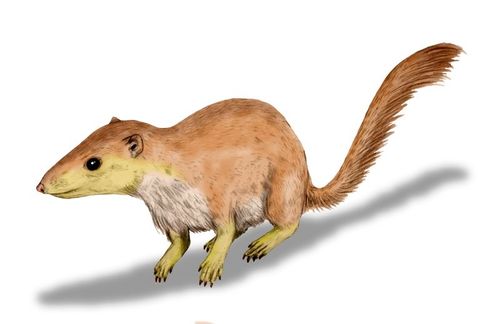 |
 |
 |
 |
 |
Produced
by the Population Genetics and Evolution class, Furman University |
||||
 |
 |
 |
 |
 |
Produced
by the Population Genetics and Evolution class, Furman University |
||||
 |
The
Paleogene: Purgatorius |
 |
||
| Purgatorius
is believed to be one of the earliest, most primitive plesiadapiforms,
primate like mammals. They were small in size, with teeth that share characteristics
with both plesiadapiforms and true primates. They most likely fed on insects
as well as soft plant material (like fruits). There is debate on whether
it should be classified as a primate or an early plesiadapiform. The morphology
of the post canines has characteristics reminiscent of an early primate,
but specializations of the incisors suggest that it was more likely a
the Plesiadapiformes (Clemens 2004). Previous depictions have set Purgatorius
in the same time frame as organisms from the Cretaceous, but it seems
more likely that this was a case of mixed sediments as the majority of
fossils are from the Paleocene (Jehle 2006). Page by Megan Aprill |
 |
| Image of Purgatorius, from: Dinosaur pictures | |
|
Clemens, WA. 2004. Purgatorius (Plesiadapiformes, Primates?, Mammalia), A Paleocene Immigrant Into Northeastern Montana: Stratiagraphic Occurences And Incisor Proportions. Bulletin of Carnegie Museum of Natural History, 36: 3-13. Jehle, M. 2006. Primate-like Mammals: A Stunning Diversity in the tree tops. Paleocene Mammals of the World. Accessed April 9, 2010. Wikipedia. 2010. Purgatorius. Accessed April 9, 2010. |